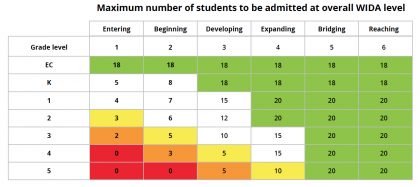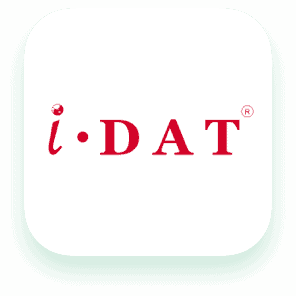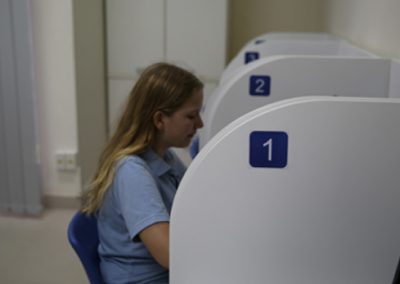In my wildest dreams, which are of course always about my work, I am an omniscient, benevolent admissions director looking a little bit like the genie in Aladdin. In a voice very similar to Robin Williams’ while standing in my school’s testing room I am waving a magic wand pointing at students and bellowing “And you get admitted” “And you get admitted” over and over again with an enormous smile on my face. And the crazy thing about this, besides the obvious, is that every morning after this dream I wake up relaxed and happy. Now whatyourdreamsmean.com tells me this is because I am waking up truly relieved that I do not have to deliver bad news to prospective students. I must admit that I believe it. I mean that is the worst part of the job. No matter how much I get cranky because sometimes we have to do another round of testing or because I have to wait until at least two other people have looked at a file before we can give families a decision, I am thankful that I am not the only one determining if we are a good fit for a prospective family.
Depending on the profile of the applicant, one of the other people involved is an English Additional Language (EAL) teacher. We have limited spaces in EAL and so when a student’s admissions screening indicates they might need some additional support we require an EAL assessment. At SSIS, our EAL teachers administer a commonly used measure of English proficiency, the WIDA MODEL assessment. This tool evaluates speaking, reading, writing and listening.
It is pretty simple to administer and in emergency cases I can give the test as well. Once the test is done you plug the results into the online calculator and it creates a score sheet. And this is when the hard work begins.
If we were a public school with unlimited funding for EAL support and in a country where English is the native language, we would use the WIDA rubric and determine that every student who is not achieving at the native or near native level would receive direct support and be considered “in the EAL program.” But, just like the chances of me becoming a genie, the chances that the majority of international schools could be sustainable with this model are pretty close to zero.
So our school, like many others, set entrance and exit cut-offs for the EAL program. These scores help us to determine whether or not a student can access the curriculum, how much support they would need and sometimes, depending on their grade level, whether or not we can even admit them into the school. When we set the cut-offs, the EAL team, the principals and I got together to hash things out. Each department had different points of view about what the scores should be and valid reasons for these views. The EAL teachers needed to make sure that their resources were not stretched too thin, the principals needed to balance the demands on the classroom teachers and I needed to make sure that the school has a sustainable enrollment. In the end we came up with scores that we still use today.
EAL teachers take the results of the WIDA assessment, the answers on the language survey and the student’s academic experience with English into consideration when making an admissions recommendation. Once they make their recommendation I look at it, check to see if we have EAL seats available, and make my decision. Then the file goes to the principal or into the “no thank you” pile. Sounds pretty simple and straightforward right? Ah but no, just when we thought we had it down to a science our marketplace changed.
In response to this change we revamped our elementary school EAL department, moved to a model of one EAL teacher per grade level and moved from the notion of “x” number of seats per grade level to the notion that many of the current students and applicants fall somewhere on the EAL continuum due to the demographics of expatriates here in Vietnam. Therefore, we needed to look at what mix of the continuum works best in our classrooms without lowering our standards. Working with EAL teachers and the principal I developed a continuum table with spaces available at each level, which we use to inform admissions decisions.

Enormous amounts of professional development and time went into the shift, classroom teachers received explicit EAL training, EAL teachers received more training on the new model of delivering services and time and resources were spent on cross-divisional alignment. At the beginning of the school year I spent two-days at an in-house workshop with the EAL teachers from all divisions to refine our common understanding of the scores and use of the WIDA scoring rubric. This helps us to ensure that someone placed as “bridging” by one teacher would get the same result if another teacher conducted the assessment. Intense discussions revolved around what was the best calculation to determine composite scores given our student population but thankfully consensus was reached giving all a feeling of accomplishment. During this workshop we also began the task of truly analyzing where all of our current students would be on the continuum based on reviews of unassisted classwork.
This work will continue as we evaluate our current student population, review the continuum table used for admissions and begin assessments for the new admissions season. Having such a close working relationship with our EAL teachers has made the process professionally rewarding and allows us to feel good about our admissions decisions. It is great when genie-me can announce “And you get admitted” knowing we truly are a good fit for the student.
















 All Services
All Services






